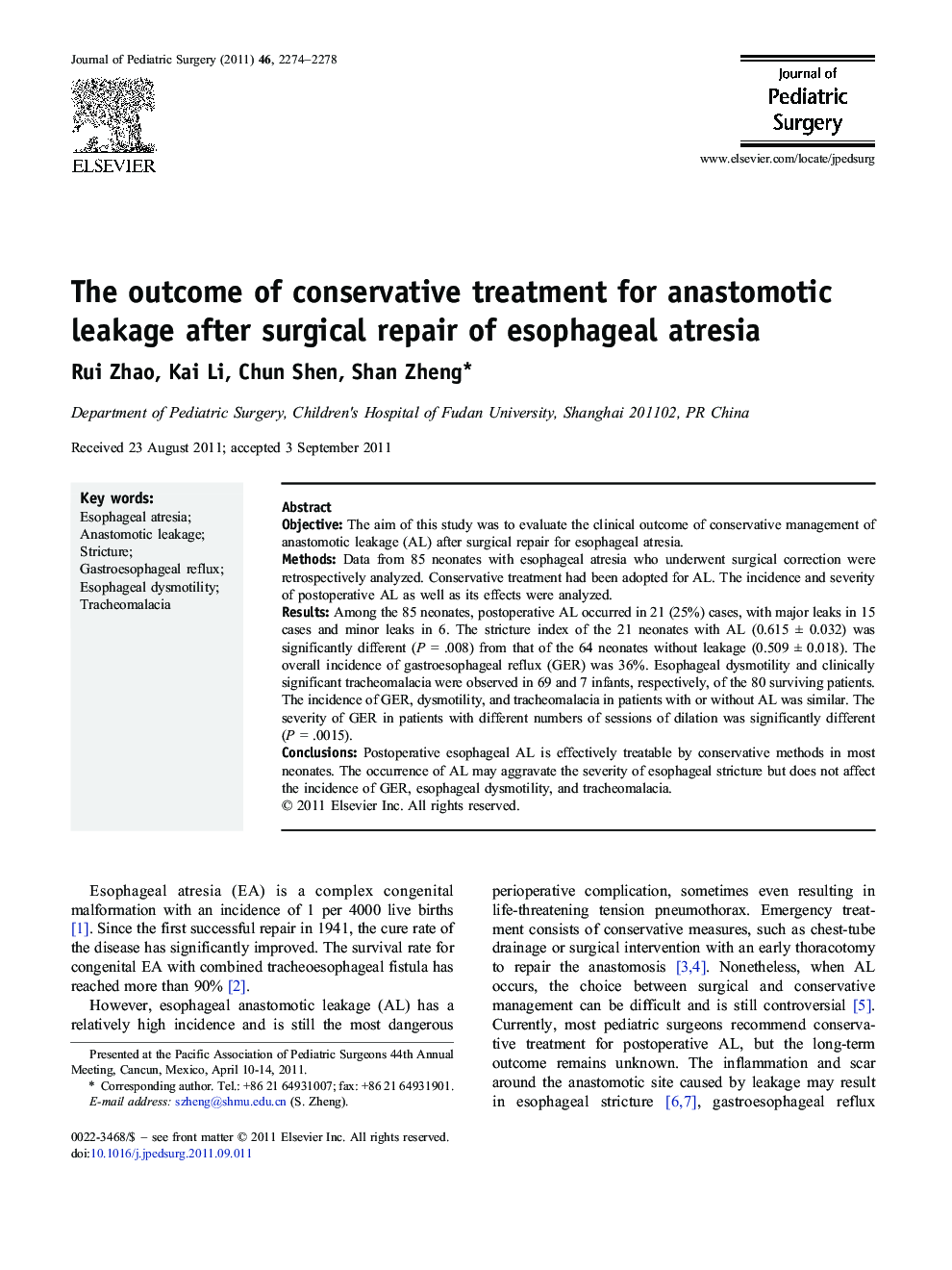| Article ID | Journal | Published Year | Pages | File Type |
|---|---|---|---|---|
| 4156686 | Journal of Pediatric Surgery | 2011 | 5 Pages |
ObjectiveThe aim of this study was to evaluate the clinical outcome of conservative management of anastomotic leakage (AL) after surgical repair for esophageal atresia.MethodsData from 85 neonates with esophageal atresia who underwent surgical correction were retrospectively analyzed. Conservative treatment had been adopted for AL. The incidence and severity of postoperative AL as well as its effects were analyzed.ResultsAmong the 85 neonates, postoperative AL occurred in 21 (25%) cases, with major leaks in 15 cases and minor leaks in 6. The stricture index of the 21 neonates with AL (0.615 ± 0.032) was significantly different (P = .008) from that of the 64 neonates without leakage (0.509 ± 0.018). The overall incidence of gastroesophageal reflux (GER) was 36%. Esophageal dysmotility and clinically significant tracheomalacia were observed in 69 and 7 infants, respectively, of the 80 surviving patients. The incidence of GER, dysmotility, and tracheomalacia in patients with or without AL was similar. The severity of GER in patients with different numbers of sessions of dilation was significantly different (P = .0015).ConclusionsPostoperative esophageal AL is effectively treatable by conservative methods in most neonates. The occurrence of AL may aggravate the severity of esophageal stricture but does not affect the incidence of GER, esophageal dysmotility, and tracheomalacia.
